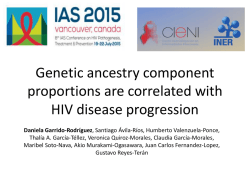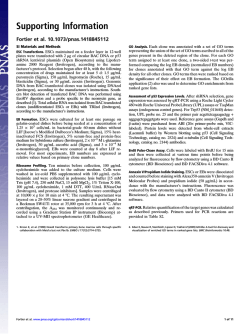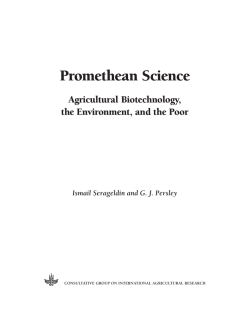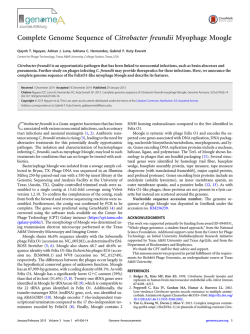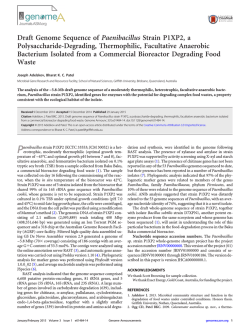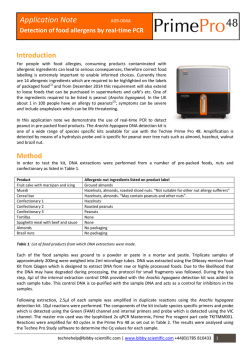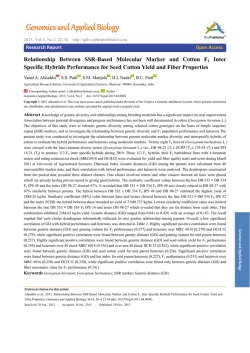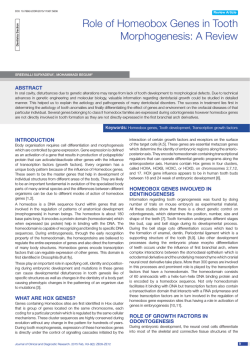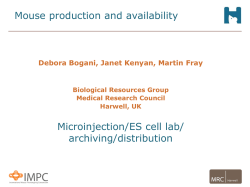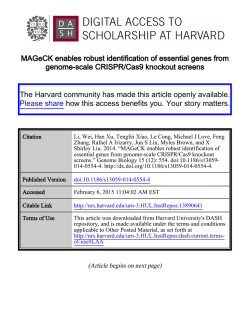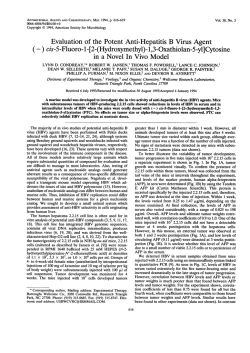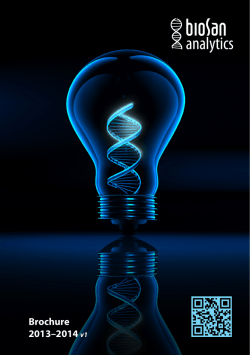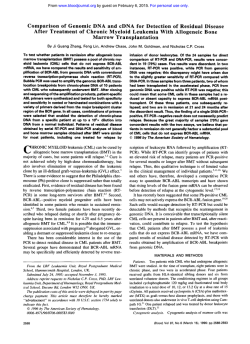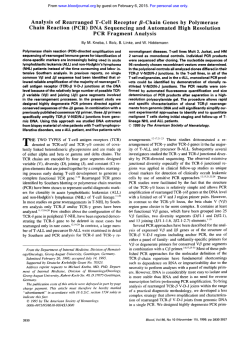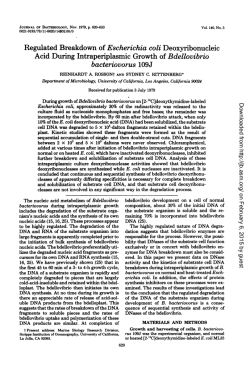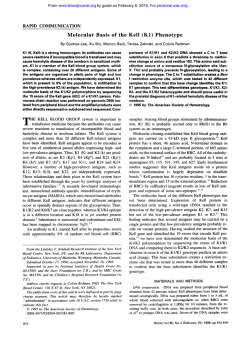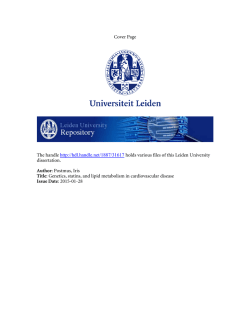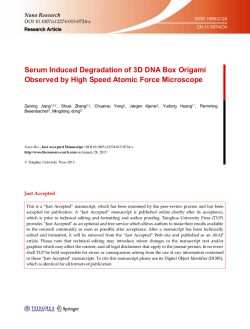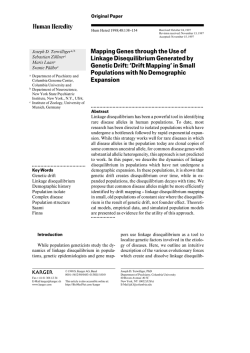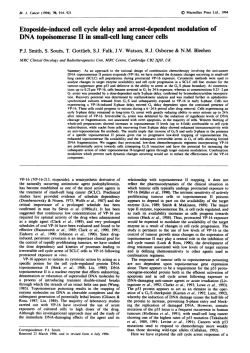
Lecture 01 -- Review Class - Center for Statistical Genetics
Biostatistics 666 Statistical Models in Human Genetics Instructor Gonçalo Abecasis Course Logistics Grading Office Hours Class Notes Course Objective z Provide an understanding of statistical models used in gene mapping studies z Survey commonly used algorithms and procedures in genetic analysis Assessment z 10-12 Weekly Assignments • About 60% of the final mark z 2 Half Term Assessments • About 40% of the final mark Office Hours z Please cross out times for which you are unavailable in the sheet going around z Room M4132 School of Public Health II Class Website z PDF versions of notes and problem sets www.sph.umich.edu/csg/abecasis/class/ z Please let me know about any mistakes! Course Contents Brief Overview Genetic Mapping “Compares the inheritance pattern of a trait with the inheritance pattern of chromosomal regions” Positional Cloning “Allows one to find where a gene is, without knowing what it is.” Some of the Topics Covered z Maximum Likelihood z Modeling Genes in Populations z Modeling Genes in Pedigrees Modeling Genes in Populations z Hardy Weinberg Equilibrium z Linkage Disequilibrium z The Coalescent z Methods for Haplotyping Modeling Genes within Pedigrees z Elston-Stewart algorithm z Lander-Green algorithm z Genetic linkage tests z Checking Genetic Data for Errors z Family Based Association Tests Let’s Get Started! The Basics Today – Primer In Genetics z How information is stored in DNA z How DNA is inherited z Types of DNA variation z Common designs for Genetic studies DNA – Information Store z Encodes the information required for cells and organisms to function and produce new cells and organisms. z DNA variation is responsible for many individual differences, some of which are medically important. Human Genome z Multiple chromosomes • 22 autosomes • Present in 2 copies per individual • One maternally and one paternally inherited copy • 1 pair of sex chromosomes • Females have two X chromosomes • Males have one X chromosome and one Y chromosome z Total of ~3 x 109 bases (each A, C, T or G) Inheritance of DNA z Through recombination, a new “DNA string” is formed by combining two parental DNA strings z Thus, each chromosome we carry is a mosaic of the two chromosomes carried by our parents z Only a small number of changeovers between the two parental chromosomes • z On average ~1 per Morgan (~108 bases) Copying of DNA sequences is imperfect and, for typical sequences, the error rate is about 1 per 108 bases copied Human Variation z Every chromosome is unique … z … but when two chromosomes are compared most of their sequence is identical z About 1 per 1,000 bases differs between pairs of chromosomes in the population • • • In the same individual In the same geographic location Across the world DNA Sequences That Vary… z Genes (protein coding sequences, which total <2% of all DNA) • z Pseudogenes • z Sequences which control gene expression Repeat DNA • z Ancient genes, inactivated through mutation Promoters and Enhancers • z ~30,000-35,000 in humans Useful for tracking DNA through families or populations Packaging sequences, “spacer” DNA, etc. Important Vocabulary … z z z z z z z Locus Polymorphism Allele Mutation Linkage Genetic Marker Genotype z Phenotype • • z Chromosomal landmarks • • z z z Mendelian Traits Complex Traits Centromeres Telomeres Gene RNA Protein Data for a Genetic Study z Pedigree • Set of individuals of known relationship z Observed marker genotypes • SNPs, VNTRs, microsatellites z Phenotype data for individuals Genetic Markers z Genetic variants that can be measured conveniently z Typically, we characterize them by: z • • Number of Alleles Frequency of Each Allele • These are summarized by the heterozygosity The most commonly used genetic markers are microsatellites and SNPs Phenotypes z Measured characters of individuals z Mendelian Phenotypes • • z Completely determined by genes e.g. Cystic Fibrosis, Retinoblastoma Complex Phenotypes • • Controlled by multiple genes and environmental factors eg. Diabetes, Inflammatory Bowel Disease Ultimate Aim of Gene-Mapping Experiments z Localize and identify variants that control interesting traits • Susceptibility to human disease • Phenotypic variation in the population z The difficulty… • Testing several million variants is impractical… 3 Common Questions z Are there genes influencing this trait? • Epidemiological studies z Where are those genes? • Linkage analysis z What are those genes? • Association analysis Is a trait genetic? z Examine distribution of trait in the population and among relatives z E.g. Inflammatory Bowel Disease (Crohn’s) • General population • 1-3 cases per 1,000 individuals • Twins of affected individuals • 44% of monozygotic twins also have Crohn’s • 3.8% of dizygotic twins also have Crohn’s Where are those genes? z Find genetic markers that co-segregate with disease z E.g. D16S3136 co-segregates with Crohn’s What are those genes? z Identify genetic variants that are associated with disease… z E.g. Mutations which disrupt NOD2 are much more common in Crohn’s patients • • • Arg702Trp: Gly908Arg: Leu1007fs Crohn’s 11% 4% 8% Controls 4% 2% 4% Common Designs for Genetic Studies z Parametric Linkage analysis z Allele-sharing methods z Association analysis Parametric Linkage Analysis z Evaluate a specific model and location • • z z Allele frequencies at disease loci Probability of disease for each genotype Potentially very powerful Vulnerable to heterogeneity, model misspecification Allele Sharing Analysis z z z Reject null hypothesis that sharing is random at a particular region Less powerful, but more robust Quantitative trait extensions exist Association Analysis z z z Simplest case compares frequency of allele among cases and controls Genome-wide search requires hundreds of thousands of markers Typically, focuses on candidate genes Which Design to Choose? Magnitude of effect The Right Choice Depends on the Alleles We Seek… Rare, high penetrance mutations – use linkage Common, low penetrance variants – use association Frequency in population Genetic Linkage Studies z Identify variants with relatively large contributions to disease risk z Require only a coarse measurement of genetic variation • • z 400 – 800 microsatellites can extract most of the linkage information in typical pedigrees Until recently, the only option for conducting whole genome studies High-throughput SNP genotyping has already sped up and facilitated these studies • Data analysis methods must select subset of independent SNPs or model disequilibrium between markers Genetic Association Studies z Identify genetic variants with relatively small individual contributions to disease risk z Require detailed measurement of genetic variation • • z > 10,000,000 catalogued genetic variants, so … Until recently, limited to candidate genes or regions • A hit-and-miss approach… SNP resources and decreasing assay costs now make it possible to examine 100,000s of markers Recommended Reading z An introduction to important issues in genetics: • z Lander and Schork (1994) Science 265:2037-48 A good reference on molecular genetics: • Human Molecular Genetics Tom Strachan and Andrew Read Reading for Next Lecture z Will be discussing Hardy-Weinberg equilibrium • A basic feature of genotypes in human populations z Wigginton, Cutler, Abecasis (2005) A note on exact tests of Hardy-Weinberg equilibrium. Am J Hum Genet 76:887-93 z This paper describes an efficient method for testing Hardy-Weinberg equilibrium and includes many important historical references
© Copyright 2025
